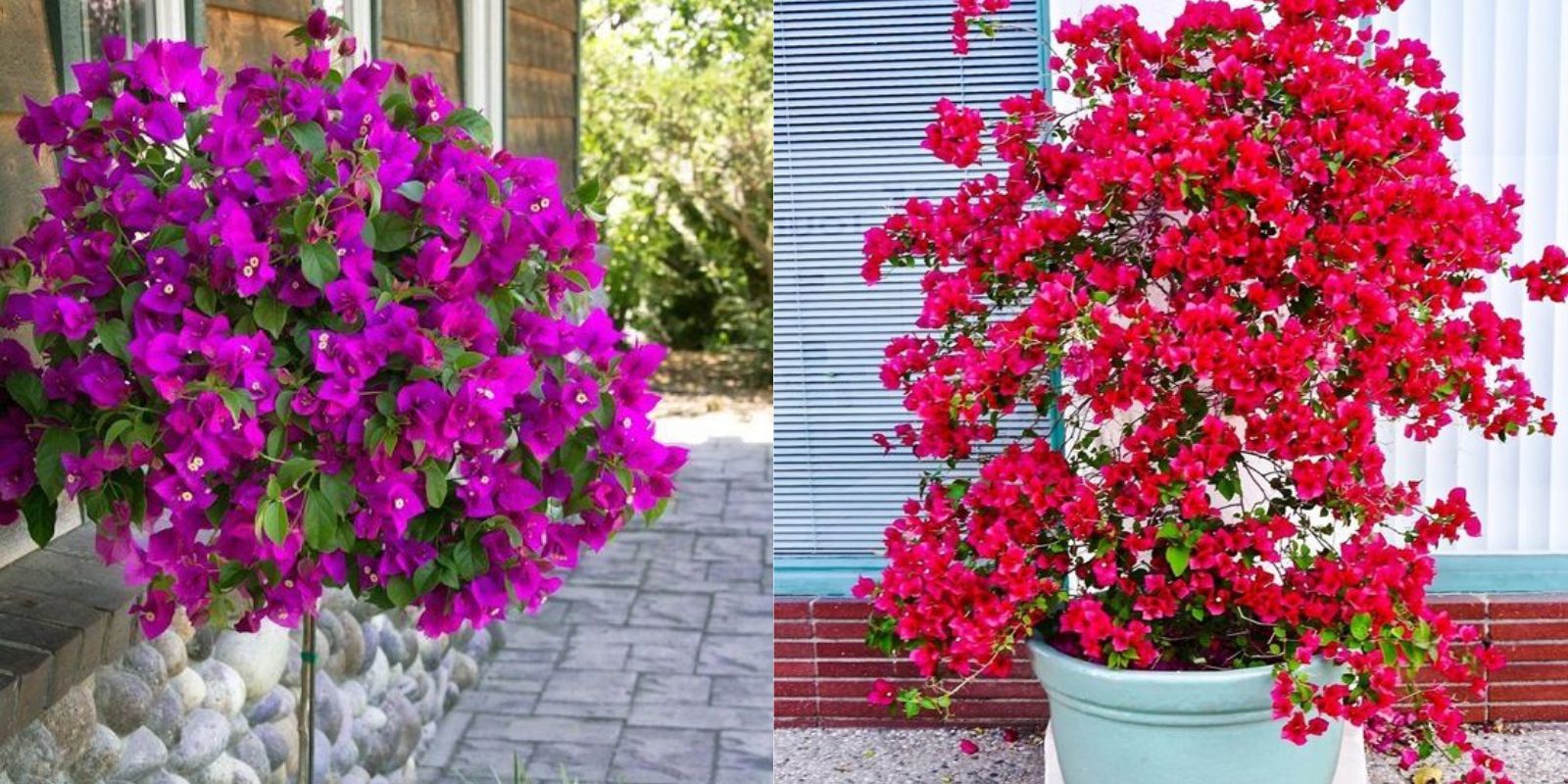Bougainvilleas are celebrated for their vibrant, show-stopping blooms that can transform any garden or living space into a tropical paradise. Their colorful bracts (which are actually modified leaves) come in a variety of shades, including magenta, purple, red, and orange, making them a favorite among gardeners and plant enthusiasts alike. While traditionally grown in the ground, bougainvilleas can thrive just as well in pots. Growing them in containers allows you to enjoy their stunning flowers on patios, balconies, or even indoors. This article will guide you through the process of cultivating bougainvilleas in pots and ensuring they remain in constant bloom.
Introduction
Bougainvilleas, native to South America, are known for their resilience and ability to produce abundant flowers in warm climates. By following the right steps, you can replicate their ideal conditions in a pot, ensuring they continue to flower year-round. Whether you’re an experienced gardener or a beginner, this guide will help you create the perfect environment for your bougainvilleas and keep them blooming with vibrant colors.
Choosing the Right Pot
Selecting the Pot
Drainage:
- Essential: Bougainvilleas require excellent drainage to prevent root rot. Choose a pot with drainage holes at the bottom to ensure excess water can escape.
Size:
- Appropriate Size: Select a pot that is large enough to accommodate the root system of the plant but not excessively large. A pot that is too big can lead to waterlogging and other issues.
Pot Material
Types of Pots:
- Terra Cotta: Terra cotta pots are porous, which helps with air circulation and drainage.
- Plastic: Plastic pots retain moisture better and are lighter, but ensure they have adequate drainage holes.
Using Well-Draining Soil
Soil Composition
Mix:
- Potting Mix: Use a high-quality potting mix designed for container plants. Bougainvilleas prefer soil that drains well.
- Additives: Enhance drainage by mixing in perlite or coarse sand. This prevents the soil from becoming too compacted and improves aeration.
Preparation:
- Mixing: Combine equal parts potting mix with perlite or sand before filling the pot. This will ensure the soil remains loose and well-draining.
Providing Adequate Sunlight
Light Requirements
Sun Exposure:
- Full Sun: Bougainvilleas thrive in bright, direct sunlight. Place the pot in a location where it will receive at least 6 hours of sunlight per day.
- Indoor Considerations: If growing indoors, place the pot near a south-facing window or under grow lights to mimic full sun conditions.
Seasonal Adjustments:
- Outdoor Pots: In cooler months, ensure the plant receives as much sunlight as possible. Consider moving the pot to a sunnier spot if needed.
Watering Wisely
Watering Practices
Frequency:
- Drying Out: Allow the top inch of soil to dry out between waterings. Bougainvilleas are drought-tolerant and prefer to be on the drier side.
- Avoid Overwatering: Too much water can lead to root rot. Water the plant thoroughly but let the soil dry out before the next watering.
Watering Method:
- Check Soil Moisture: Use a finger or a moisture meter to check the soil. Only water when the soil feels dry to the touch.
Fertilizing Regularly
Fertilization Schedule
Type of Fertilizer:
- Balanced Fertilizer: Use a balanced, water-soluble fertilizer with equal parts nitrogen, phosphorus, and potassium (e.g., 10-10-10). This promotes healthy growth and vibrant blooms.
Application:
- Frequency: Feed the bougainvillea every 4-6 weeks during the growing season (spring and summer). Reduce fertilization in the fall and winter when the plant is less active.
Instructions:
- Dilution: Follow the manufacturer’s instructions for the correct dilution and application rates. Over-fertilizing can damage the plant and lead to excessive leaf growth with fewer blooms.
Pruning as Needed
Pruning Techniques
Timing:
- Post-Bloom: Prune the bougainvillea after the blooming period to maintain its shape and encourage new growth.
- Regular Maintenance: Remove spent flowers and any dead or damaged branches to promote continuous blooming.
Pruning Tips:
- Shape and Size: Prune to control the plant’s size and shape. Cutting back excessively will result in fewer blooms, so aim for light, frequent pruning.
Troubleshooting Common Issues
1. Lack of Blooms
Possible Causes:
- Insufficient Light: Bougainvilleas need full sun to bloom. Ensure the plant is getting enough light.
- Over-Fertilization: Excessive fertilization can lead to lush foliage but fewer flowers.
Solutions:
- Adjust Light: Move the pot to a sunnier location.
- Fertilize Less: Reduce the frequency of fertilization and focus on maintaining proper watering practices.
2. Yellowing Leaves
Possible Causes:
- Overwatering: Yellow leaves can indicate root rot caused by overwatering.
Solutions:
- Improve Drainage: Ensure the pot has proper drainage and allow the soil to dry out between waterings.
3. Pest Problems
Common Pests:
- Pests: Aphids, spider mites, and whiteflies can affect bougainvilleas.
Solutions:
- Treatment: Use insecticidal soap or neem oil to treat pest infestations. Regularly inspect the plant for signs of pests.
Conclusion
Growing bougainvilleas in pots offers a fantastic way to enjoy their vibrant blooms in various settings, from patios to indoor spaces. By following these steps—choosing the right pot, using well-draining soil, providing adequate sunlight, watering wisely, fertilizing regularly, and pruning as needed—you can ensure your bougainvilleas remain healthy and continuously bloom throughout the year.
With a little care and attention, you can bring the dazzling colors of bougainvilleas into your home and enjoy their beauty in every season.
Motivation: Embrace the joy of growing bougainvilleas in pots and fill your space with their stunning, continuous blooms all year round! 🌺

